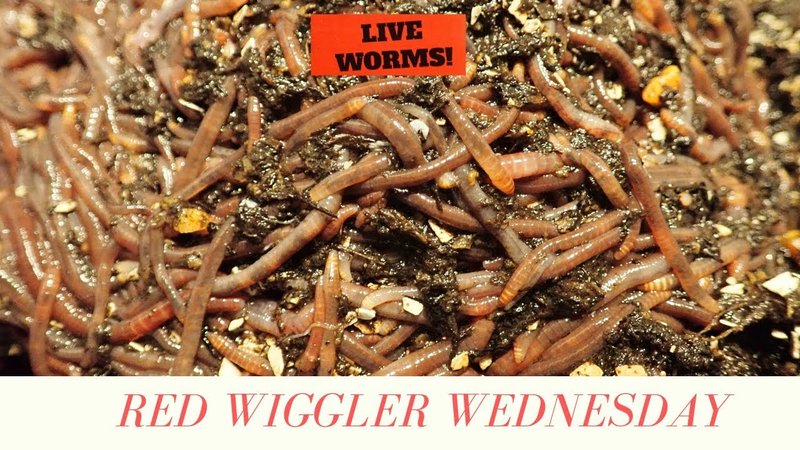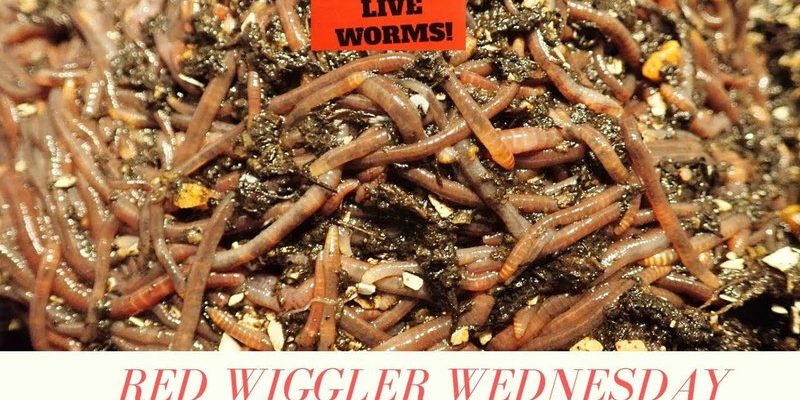
You might be wondering why this even matters. Well, understanding how red wigglers reproduce can help you maintain a thriving composting system. Whether you’re new to vermiculture or looking to optimize your worm farm, knowing about their life cycle will give you better insight into keeping these eco-friendly workers happy and productive.
How Red Wigglers Mate
Red wigglers, scientifically known as *Eisenia fetida*, have a unique way of mating. They are hermaphrodites, which means each worm has both male and female reproductive organs. Here’s how the process usually goes: during mating, two worms align themselves ventrally (that’s the belly side) and exchange sperm. This often looks like a wriggling dance, which is pretty mesmerizing to watch!
Once they’ve completed mating, the worms will separate. Each worm can store the sperm it receives for future use. This strategy is pretty clever; it allows them to reproduce at the right time based on environmental conditions. If someone asks you, “How do these worms multiply?” you can confidently explain that it’s like they’re playing it cool, waiting for the right moment to bring new life into the world.
The Role of Cocoon Production
After mating, here comes the really interesting part: cocoon production. Red wigglers create special casings, or cocoon pods, where they will lay their eggs. One worm can produce several cocoons in a week, with each cocoon containing up to five eggs. This means that just a few months can lead to a boom in your worm population, which is fantastic for composting!
Interestingly, the color of the cocoon can vary depending on the worm’s diet and environment. In their cozy compost homes, these red wigglers can thrive, increasing their chances of reproducing more efficiently. You could say that a well-fed worm is a happy worm!
Understanding the Egg Stage
Red wiggler eggs are tiny and often look like little yellowish or brown jelly beads. Once laid, the eggs develop inside the cocoon for about two to three weeks, depending on environmental conditions like temperature and moisture. Here’s where a little patience comes in—these eggs need the right warmth and humidity to thrive.
As the eggs mature, they go through a crucial transition period. The conditions in your compost bin can significantly impact the success of the hatching process. You might want to keep an eye on moisture levels and ensure there’s enough organic matter to keep the little guys comfortable.
Factors Affecting Egg Development
Several factors influence how quickly and successfully red wigglers develop from eggs into baby worms. Here’s a quick rundown of some key elements:
- Temperature: Ideally, red wigglers prefer temperatures between 60°F to 70°F. Too cold or too hot can hinder development.
- Moisture: The cocoons need enough moisture to keep the eggs hydrated, but not so much that they drown. A balanced moisture level is essential.
- Food Supply: Having ample decomposing organic material available ensures the hatchlings have a source of nourishment once they emerge.
If all goes well, you can soon expect tiny, wriggling worms to break free from their cocoons, beginning their journey as composting champions.
The Larval Stage: Baby Worms in Action
Once the baby worms, or hatchlings, emerge from their cocoons, they are incredibly tiny—about the size of a grain of rice. During this early stage, they look completely different from adult red wigglers. They are often pale and will gradually develop their reddish hue as they grow, which is a gradual process.
Hatchlings are voracious eaters. They typically start munching on finer organic material, helping break it down even further, which is great for the compost pile. It’s almost like they instinctively know their job—contributing to the composting cycle right from the get-go!
Growth Rate and Maturity
Red wiggler larvae grow rapidly under ideal conditions. You might be surprised to learn that they can reach adult size in just about 60 to 90 days. That’s fast! The speed of their growth is influenced by factors like food availability, temperature, and overall health of the compost environment.
Once these tiny worms mature, they will start the whole reproductive cycle again, contributing to your composting efforts. Here’s the thing: maintaining a good balance of moisture, temperature, and food in your compost bin will keep this cycle running smoothly.
The Importance of Maintaining Healthy Red Wiggler Populations
So, why should you care about understanding red wiggler reproduction? Well, for those who cultivate their own compost, keeping a healthy population of these worms means a more efficient composting process. Healthy worms break down organic matter faster, making nutrient-rich compost that benefits your garden.
If your worm population dwindles, it could slow down the composting process and alter the quality of the compost. It’s essential to monitor their habitat regularly and adjust conditions if needed.
Tips for Keeping Your Worms Happy
To maintain a thriving environment for your red wigglers, consider these tips:
- Feed them right: Offer a balanced diet including fruit scraps, vegetable peels, and coffee grounds.
- Keep it cozy: Ensure the temperature is stable. Use a thermometer to monitor conditions in your compost bin.
- Moisture balance: Check the moisture level regularly. The materials should feel like a damp sponge—not too wet or dry.
Keeping these factors in check can lead to a happy worm farm and a continuous cycle of reproduction, ensuring your compost bin stays productive.
Final Thoughts
Red wigglers are not just excellent composters; their reproduction is a fascinating process that reflects nature’s brilliance. From their mating rituals to the nurturing of eggs and larvae, every step plays a vital role in creating a sustainable cycle. By understanding how they reproduce, you can create a thriving worm farm that benefits both you and your garden.
So, next time you toss scraps into your compost bin, remember the tiny wrigglers turning waste into gold. Happy composting, and may your red wigglers thrive and multiply!

